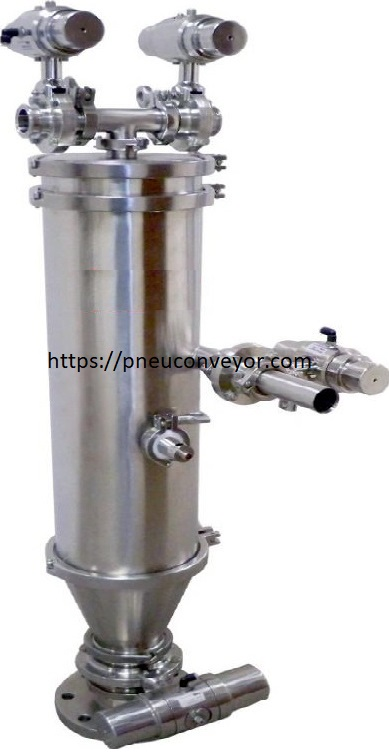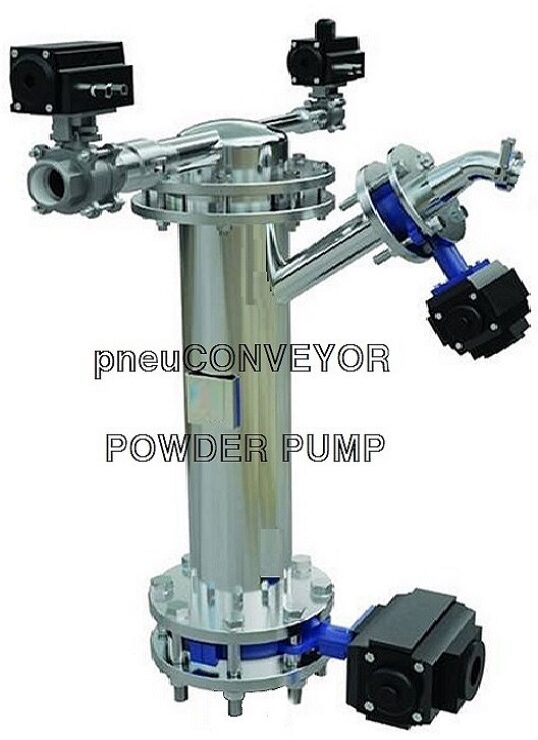
A powder transfer system is a type of system that is used to transfer powders, granules, and other dry materials from one location to another. These systems are commonly used in industries such as food processing, pharmaceuticals, and chemical manufacturing, where the transfer of powders and other dry materials is a critical part of the production process.
Powder transfer systems can be designed in various configurations, depending on the specific requirements of the application. Some of the most common types of powder transfer systems include pneumatic conveying systems, screw conveyors, belt conveyors, and vacuum transfer systems.
Pneumatic conveying systems, for example, use air pressure to transport powders and other dry materials through pipes or ducts. Screw conveyors use a rotating screw to move powders and other materials through a tube or trough. Belt conveyors use a continuous belt to transport materials from one location to another. Vacuum transfer systems use suction to move powders and other materials from one location to another.
Overall, powder transfer systems are designed to ensure efficient, safe, and hygienic transfer of powders and other dry materials in various industrial applications.
Vacuum powder transfer system
A vacuum powder transfer system is a type of material handling system that uses vacuum technology to move powders and other dry materials from one location to another. The system consists of a series of interconnected pipes and vessels that are maintained under a vacuum to create a pressure differential that moves the material through the system.
In a vacuum powder transfer system, the material is typically loaded into a feed hopper or vessel, which is then connected to the rest of the system via a vacuum-tight seal. Once the vacuum is established, the material is drawn through the system by the pressure differential created by the vacuum. This can be achieved using a variety of different techniques, including positive displacement pumps, eductors, and other types of vacuum conveyors.
Vacuum powder transfer systems are commonly used in a variety of industries, including pharmaceuticals, food processing, and chemical manufacturing. They offer several advantages over other types of material handling systems, including greater efficiency, reduced risk of cross-contamination, and improved worker safety. However, they can also be more complex and expensive to install and maintain than other types of systems, and may require specialized knowledge and expertise to operate effectively.
Pneumatic powder transfer system
A pneumatic powder transfer system is a method of transferring powders or granular materials using compressed air or other gases. This system is commonly used in industrial processes such as chemical processing, food processing, and pharmaceutical manufacturing.
The system typically consists of a source vessel, a conveying pipeline, and a receiving vessel. Compressed air or gas is used to create a pressure differential between the source and receiving vessels, causing the powder to be pneumatically conveyed through the pipeline.
Pneumatic powder transfer systems offer several advantages over other methods of powder transfer. They can be used to transport powders over long distances, and can be easily configured to accommodate changes in process flow or equipment layout. Pneumatic systems are also suitable for use with a wide range of powders, including those that are abrasive, toxic, or prone to clumping.
However, pneumatic systems can also present some challenges. For example, the velocity of the powder within the pipeline must be carefully controlled to prevent damage to the material or the pipeline itself. In addition, the use of compressed air can introduce moisture and other contaminants into the process, which must be carefully managed to maintain product quality.
Overall, pneumatic powder transfer systems are a flexible and efficient way to transport powders in industrial processes, but must be carefully designed and operated to ensure reliable performance.
How the powder transfer system works
A powder transfer system is a type of equipment used to transfer powder materials from one location to another. It is commonly used in industries such as pharmaceuticals, food processing, chemical manufacturing, and others.
The powder transfer system typically consists of three main components: a source container, a transfer unit, and a receiving container. The powder material is stored in source container. The transfer unit is the mechanism that moves the powder material from the source container to the receiving container. The powder material is deposited in receiving container after it is transferred.
There are several types of powder transfer systems available, including pneumatic conveyors, vacuum conveyors, and screw conveyors. Each type of system works differently, but they all rely on the principle of moving the powder material through an enclosed space or pipeline.
Pneumatic conveyors use air pressure to move the powder material through a pipeline. The pipeline is typically made of metal or plastic, and it may be straight or curved. The air pressure creates a vacuum that draws the powder material through the pipeline, where it is deposited in the receiving container.
Vacuum conveyors work in a similar way to pneumatic conveyors, but instead of using air pressure, they use a vacuum pump to create suction. The powder material is drawn into the pipeline by the vacuum and deposited in the receiving container.
Screw conveyors use a rotating screw to move the powder material through a pipeline. The screw rotates in a cylindrical housing, pushing the powder material forward as it turns. The pipeline is typically inclined, allowing the powder material to be transported from one level to another.
Overall, powder transfer systems are essential equipment for industries that need to move powder materials efficiently and safely. The type of system used depends on the specific needs of the industry, such as the type and amount of powder material being transported and the distance it needs to be moved.

